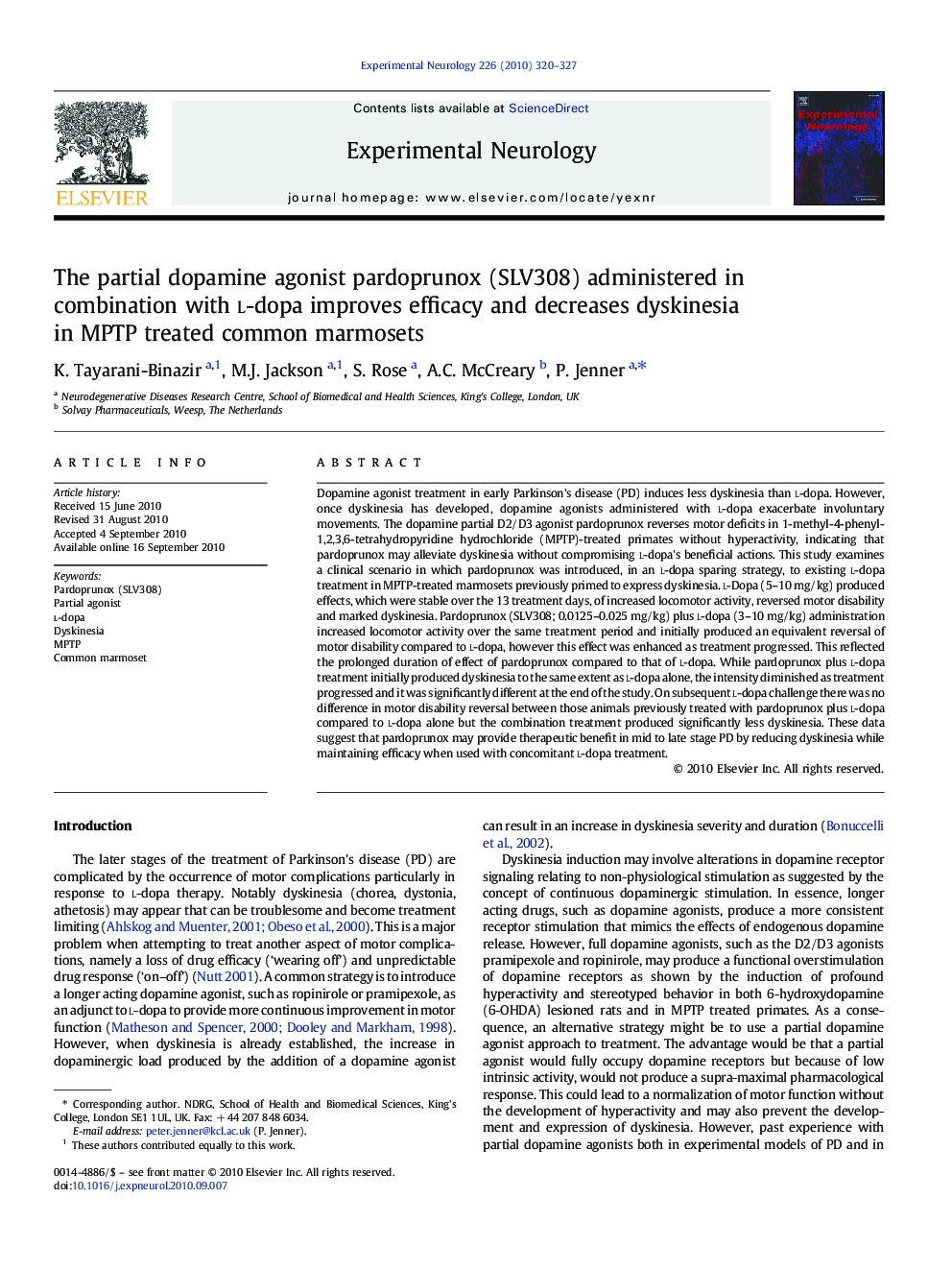| Article ID | Journal | Published Year | Pages | File Type |
|---|---|---|---|---|
| 3055766 | Experimental Neurology | 2010 | 8 Pages |
Dopamine agonist treatment in early Parkinson's disease (PD) induces less dyskinesia than l-dopa. However, once dyskinesia has developed, dopamine agonists administered with l-dopa exacerbate involuntary movements. The dopamine partial D2/D3 agonist pardoprunox reverses motor deficits in 1-methyl-4-phenyl-1,2,3,6-tetrahydropyridine hydrochloride (MPTP)-treated primates without hyperactivity, indicating that pardoprunox may alleviate dyskinesia without compromising l-dopa's beneficial actions. This study examines a clinical scenario in which pardoprunox was introduced, in an l-dopa sparing strategy, to existing l-dopa treatment in MPTP-treated marmosets previously primed to express dyskinesia. l-Dopa (5–10 mg/kg) produced effects, which were stable over the 13 treatment days, of increased locomotor activity, reversed motor disability and marked dyskinesia. Pardoprunox (SLV308; 0.0125–0.025 mg/kg) plus l-dopa (3–10 mg/kg) administration increased locomotor activity over the same treatment period and initially produced an equivalent reversal of motor disability compared to l-dopa, however this effect was enhanced as treatment progressed. This reflected the prolonged duration of effect of pardoprunox compared to that of l-dopa. While pardoprunox plus l-dopa treatment initially produced dyskinesia to the same extent as l-dopa alone, the intensity diminished as treatment progressed and it was significantly different at the end of the study. On subsequent l-dopa challenge there was no difference in motor disability reversal between those animals previously treated with pardoprunox plus l-dopa compared to l-dopa alone but the combination treatment produced significantly less dyskinesia. These data suggest that pardoprunox may provide therapeutic benefit in mid to late stage PD by reducing dyskinesia while maintaining efficacy when used with concomitant l-dopa treatment.
Research Highlights►Pardoprunox + l-dopa can enhance motor disability reversal compared to l-dopa alone ►Chronic Pardoprunox treatment leads to a reduction of l-dopa induced dyskinesia ►Dyskinesia reducing action persists temporarily after withdrawal of Pardoprunox ►This persistent action may indicate adaptive changes in basal ganglia response
